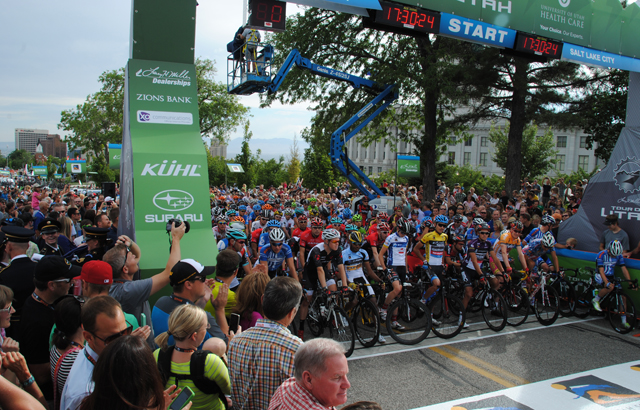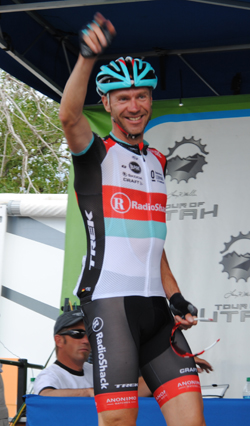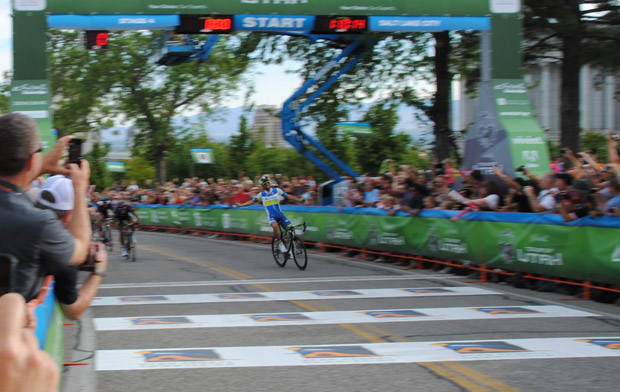
“You like watching cycling? But it’s men racing around on bikes in spandex.” I’ve heard this comment among my friends more than a couple of times, so I will begin this by giving readers a primer into how and why the Tour of Utah and the incredible athletes who compete deserve our attention. It’s an honor to have some of the world’s best cyclists come to Utah every year to compete in the Tour of Utah to showcase our spectacular canyons, city and countryside.
But cycling isn’t only about the scenery. It’s about the incredible work, strategy and grueling effort required to become the best of the best. I have been riding my bicycle for the past 32 years, some years much more than others, but I can appreciate the work involved into developing one’s legs so that one can not just ride up one of our canyons, but feel as if a canyon has been conquered.

Cycling isn’t an individual sport because cyclists ride on teams. But ultimately every cyclist must defeat one’s own will to quit. Nobody wants to really ride until legs are burning in agony and lungs are gasping for air. Nobody really wants to feel the heat reflecting off the asphalt until exhaustion and dehydration begin to set in. But everybody wants to conquer one’s own weaknesses.
Someone once said, “pain is weakness exiting the body.” I suppose this is a nihilist’s mentality. But all successful cyclists must own and embrace this mentality. Cyclists love nothing more than to feel the weakness exiting their bodies one pedal at a time.
For this reason I can appreciate those who are at the top of the sport. The fan’s favorite in Salt Lake City’s Stage Four of the Tour of Utah yesterday was Jens Voigt. Watching Voigt in the Tour de France the forty-one-year old repeatedly demonstrated that his legs, which are long past the prime of the top cyclists, still can break away from the peloton and climb hard up mountains. He demonstrated this in Salt Lake City as well, in the break away through most of the thirty-five miles. Voigt grew up in East Germany, yesterday he was asked, “What did you know or hear about Utah or the United States when you were on the other side of the Iron Curtain?”
“Where I lived you guys were the enemy behind the iron curtain. You were the ones suffering behind the wall. We were the ones enjoying freedom! That’s what they told us.” He added that he was very happy to be in Utah. Voigt’s interviews during the Tour de France were similar. After Alpe D’huez (which is the toughest cycling stage in the world) Voigt said, “We didn’t win but we worked very hard and now I’m very tired and I just want to go to sleep.” Yesterday Voigt (the oldest rider in the UCI Tour) signed another year one contract to continue his bicycle racing career.
At a special media event in Sugar House’s Caterina Greg Van Avermaet told us, “The races change, the scenery changes, but the goal is always the same: pedal hard.” Van Avermaet is currently in second place in the Tour and was narrowly defeated yesterday at the line by Lachlan Morton from Australia.
Today’s stage from Snowbasin to Snowbird is 113 miles with 11,897 vertical feet of climbing. It will be televised in 23 countries. While the turnout around the finish lines so far has been great. The turnout along the racecourse has been a bit sparse.

Every Saturday Emigration Canyon full of cyclists. All cyclists should drive and go out somewhere along the route to see the peloton pass. Cheer for Utah’s Jeff Louder, Jens Voigt, Christian Van Der Velde, Greg Van Avermaet, Lachlan Morton (who currently holds the yellow jersey). The route is incredibly long and hard. But it’s scenic, it passes three reservoirs and will showcase the Wasatch back and front to viewers all over the world.





